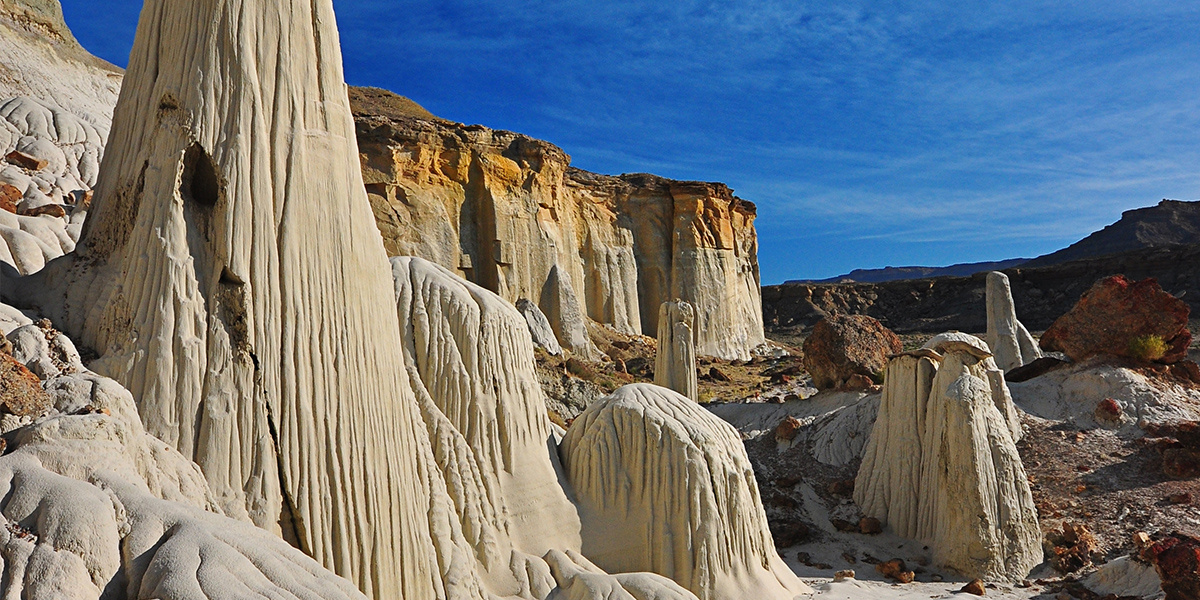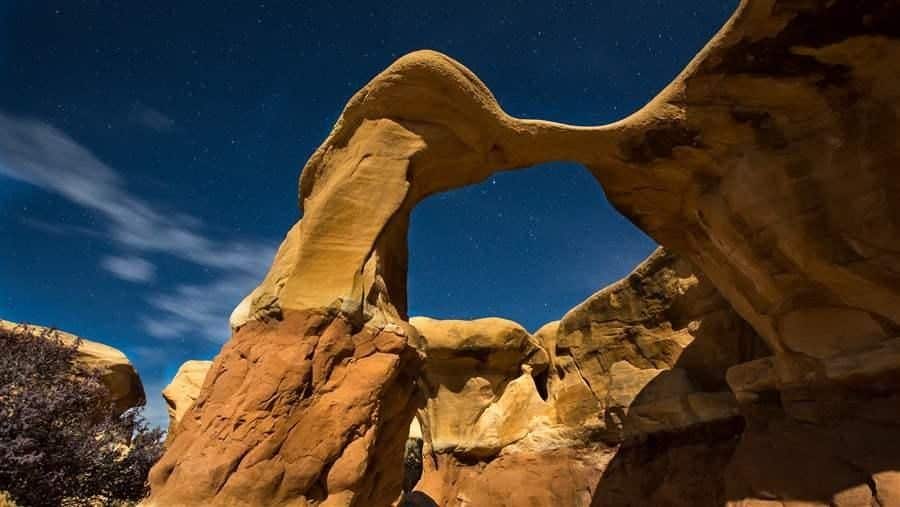
New Grand Staircase-Escalante Proposal Would Further Harm the Region

The famous Wahweap Hoodoos at Grand Staircase-Escalante National Monument are no longer protected as a national monument. Mark Stacey / NOAA
By John Gilroy
Just a day after President Donald Trump significantly diminished the boundaries of Grand Staircase-Escalante National Monument, Rep. Chris Stewart (R-UT) introduced legislation that would reduce the protections on this unique landscape even further.
The Grand Staircase-Escalante Enhancement Act (H.R. 4558) mirrors President Trump’s proclamation by creating three smaller national monuments and one national park that together would preserve roughly 60 percent of the landscape that has been safeguarded by the Grand Staircase-Escalante National Monument since its inception in 1996.
All major management decisions about the park and the monument would not be made by the National Park Service or other professional federal land managers. Instead, the management plans for each would be developed and implemented by a newly created “management council” of seven people, including four local county commissioners and one Utah state representative.
Most Utahans backed the national monument
The two-decades-old Grand Staircase-Escalante National Monument was supported by local business owners, science communities, sportsmen and Utahans across the state. According to a bipartisan 2016 poll, residents believe—by a margin larger than 2-to-1—that Grand Staircase-Escalante National Monument was good for their state. During the Trump administration’s national monument review, 99 percent of the nearly 3 million comments submitted expressed support for maintaining or expanding national monuments, including Grand Staircase-Escalante.
The monument is good for Utah’s economy
The Grand Staircase-Escalante National Monument has become a world-class tourist destination, with visitors coming to squeeze through its slot canyons, marvel at southern Utah’s cliffs and plateaus, and explore colorful hoodoos and other geologic wonders. The 2016 poll found that 70 percent of voters surveyed felt the national monument had resulted in a beneficial impact on the state’s tourism industry. That belief is supported by a 32 percent jump in personal income and a 24 percent increase in jobs in communities neighboring the national monument between 2001 and 2015, according to research from Headwaters Economics. Citing its importance to the vitality of nearby communities, local businesses and the Escalante & Boulder Chamber of Commerce urged the Trump administration to keep the national monument intact.
Calf Creek Falls at Grand Staircase-Escalante National MonumentBureau of Land Management Utah
Future discoveries lost
Cutting the size of Grand Staircase-Escalante by roughly 40 percent will be a significant loss for science. Last month, 146 scientists, researchers, and academic organizations expressed concern over fragmenting this “important living laboratory,” where significant research and discovery has happened, sending a letter to the president asking him to leave this monument unaltered.
Following President Trump’s action on the Utah monuments, Tom Wathen, a vice president at The Pew Charitable Trusts responsible for conservation projects in the U.S., said:
“The Kaiparowits Plateau in the Grand Staircase-Escalante National Monument has been called ‘the Shangri-La of dinosaurs’ for the many skeletons of these enormous creatures that have been unearthed, including 21 previously unknown species. The remains of the oldest, an 81 million-year-old tyrannosaurus—Lythronax argestes—were recovered from the plateau just four years ago. Reducing this monument’s boundaries by more than 40 percent to allow for development will do serious harm not only to scientific exploration but also to the livelihood of the local community, which has grown and thrived from tourism since the monument was designated in the red rock countryside of southern Utah more than 20 years ago.”
Under H.R. 4558, Devil’s Garden would be located in the new Kaiparowits National Monument and overseen by the new management council consisting of just seven people.Bob Wick
De facto transfer of public lands
The management council that this legislation proposes would take land management decisions out of the hands of the public and give it to just seven people—four county commissioners from Utah’s Kane and Garfield counties, a Utah state legislator who represents those counties, an Interior Department employee, and an appointee of the president. It would set a disturbing precedent for the management of federal land by handing all major management decisions in the national monuments and a national park over to a management council that is heavily weighted with a majority of local and state elected officials.
The Pew Charitable Trusts opposes H.R. 4558 and is urging members of Congress to reject this legislation.
John Gilroy directs The Pew Charitable Trusts’ U.S. public lands program.

 233k
233k  41k
41k  Subscribe
Subscribe 

